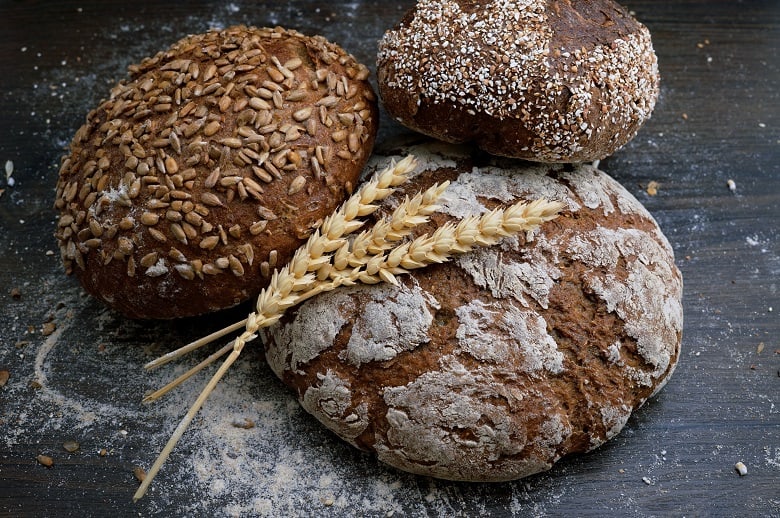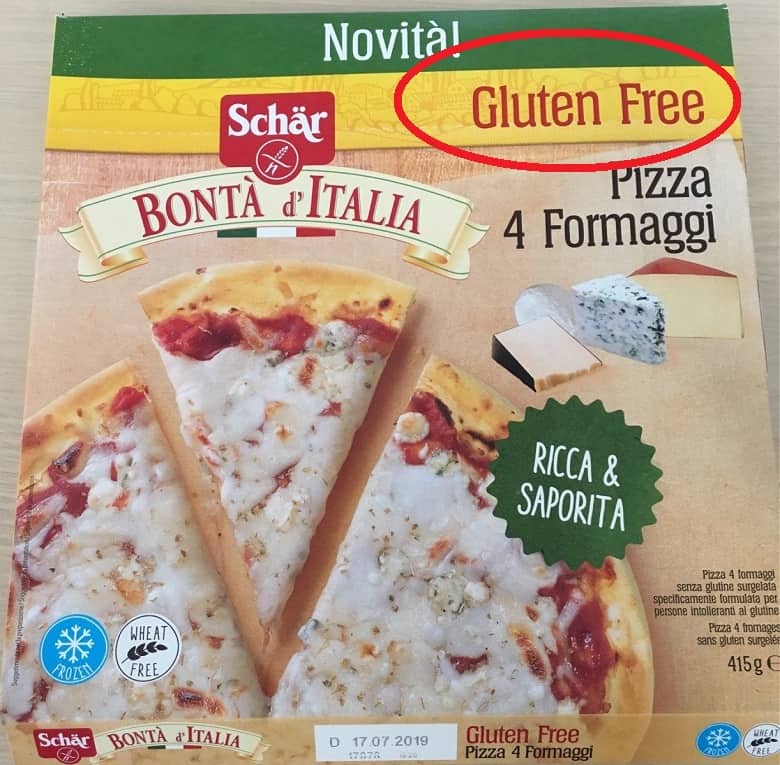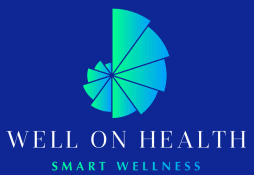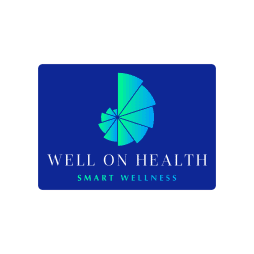We are going over gluten. I’m Dr. Travis Zigler and I’m Dr. Jenna Zigler. In the next 10 minutes, we are going to go over a lot. We are going to go over what gluten is what it means to be gluten-free. We’re going to go over gluten signs and symptoms, we are going to go over the 7 foods to avoid if you are gluten sensitive, and 9 steps to eating gluten-free.
I don’t know what is going on today. With that being said let’s go over what gluten is. Gluten literally means glue in Latin and it is a composite of elastic type proteins that are found in the endosperm portion of seeds from grass-related grains. I don’t recognize if you adhere to all of that yet generally, it’s planned to nurture embryonic plants throughout germination, and also gluten is extremely essential for breads as well as things like that because it’s really absorptive as well as flexible as well as it permits bread to increase. Gluten is also used as an additive in foods that have low protein or no protein. Examples of this are vegan or vegetarian meat replacements. It is also responsible for the chewy texture that you find in bread.
Gluten is a big part of our world. But what does it mean to be gluten-free? I’m going to say that I am pretty much a vegan gluten-free person. It is hard. It is almost impossible but I do cheat. It is something that I do 90% of the time. Then that 10% I have fun. I eat meat. I eat gluten. I drink. I do things that I would not normally do 90% of the time. It is fun. That is why I do it. Jean says bread and crackers. You are correct. We will get into that later.
What does it mean to be gluten-free?
Gluten-free came about in about the year 2013. The FDA defined it as the non-appearance of all gluten-containing grains and the product which are wheat, barley, rye, and spelt. A maximum of 20 parts per million of gluten in the final food product after the gluten-containing components have been processed for gluten removal. The 20 parts per million are actually the threshold where if you have a normal immune system and a normal digestive tract that if you’re under that 20 parts per million you won’t have any problems.
Me being gluten-sensitive I won’t have problems if I get that 20 parts per million but if somebody, however, has a celiac disease you still want to avoid that and if you have celiac disease it’s so huge that you just stick to whole foods because everything contains gluten. Wheat is in everything. Just like corn is in everything. Just like soy is in everything. My tip is to eat whole foods.
What are some gluten intolerance symptoms? How do you know if you have a gluten allergy?
Often gluten intolerance is different from celiac disease. We will get into that just a little bit but often a gluten intolerance does reflect the symptoms of celiac disease but on a lesser scale Gluten intolerance is an innate immune response as opposed to an actual allergy or an adaptive immune response like celiac disease.
With gluten intolerance or gluten sensitivity, you may not notice any symptoms after eating gluten until 24 to 72 hours later. Somebody that has celiac disease is going to notice that right away. They are going to have these symptoms but you might not notice it for 72 hours which makes it really difficult for you to identify. Those with gluten sensitivity will test negative on celiac disease tests. Just so everybody knows that. That is the importance of food sensitivity tests or a food inflammatory test to figure out that. While we go over these symptoms listen or figure out if you notice any of these symptoms in yourself because I had a ton of these symptoms.
I just said one day I have had enough I went gluten-free and they’re gone. I feel like a lot of the time some of these symptoms you just brush off like it is just gas or it is just normal.
- Number one is digestive issues. Constipation, gas, diarrhea, bloating, and abdominal pain are all very common with a gluten sensitivity or any food sensitivity. Those are not normal. Gas is not normal. Gas is your body’s way of saying that something’s not right. If you have gas a lot that means you are probably sensitive to that food or the food just sucks One of the two.
- Number two is skin problems. Me personally I get eczema. That is one of my gluten signs. I maybe have too much gluten over a weekend I will have eczema on Monday morning because it’s 24 to 72 hours delayed.
- Number three is chronic headaches after eating food with gluten. I personally if I eat gluten now if I eat too much of it, I actually get a really bad headache and sugar. Yes, sugar causes a chronic headache for me too. I get this terrible headache
- Number four I get unexplained chronic fatigue. If you are tired after meals, you shouldn’t be tired after a meal. Meal is fuel. If you are tired after that means you have a sensitivity to the food or most likely you have a sensitivity to food so you’re eating too much gluten
- Number five is hyperactivity. Think of symptoms of ADHD. Being easily distracted. Being aggressive and acting impulsively. A lot of people think that the food system that we are in right now all the processed foods that contain gluten and all the gluten-based products are causing all this ADHD and also sugar.
- Number six is depression. If you lose interest in life, have low energy mood swings or anxiety it could be just a simple food sensitivity
- Number seven is bone and joint pain due to inflammation. This happens to Travis if he has too much gluten, he gets arthritis in his wrists. I had arthritis at the age of 25 found out it was just gluten. Now I am fine.
- Number eight is brain fog and mental fatigue. This goes along with the chronic fatigue that Travis mentioned earlier but with brain fog or mental fatigue you feel like you are out in space. Like you are really not all there and that your brain is not fully working. That is a pretty common one as far as food sensitivities go in general.
- Number nine is numbness in the hands and feet. That is something that’s been reported by some people.
- Number ten is canker sores. These are small lesions that are in the inner cheeks or on the gums. I’m just going to interrupt. This is a side note not even related to the video but sodium lauryl sulfate is in almost every Crest, Colgate, and Aquafresh products. Get that out of your diet. Sodium lauryl sulfate is like poison. Get it out of your diet. When I eliminated it my canker sores, I never get him anymore. I used to get them for like months at a time and they wouldn’t heal. Sodium lauryl sulfate it is like my number one tip for canker sores. We use Jason toothpaste
- Number eleven is fibromyalgia. This condition is characterized by widespread musculoskeletal pain, sleep disturbances, fatigue, and depression.
All of those things all rolled into one. A small study on just 20 patients showed that all of them who cut out gluten completely from their diet really dramatically improve their symptoms. That is telling right there even though it was a small study.
- Number twelve is irritable bowel syndrome which goes along with number one we talked about with digestive issues. Many people that have IBS know that diet plays such a huge role and if you get gluten out of your diet it’s most likely going to help your IBS symptoms.
How do you tell if you have a gluten intolerance or a gluten sensitivity? You take a food sensitivity test. If you can’t afford a food sensitivity test they tend to be anywhere from $300 to $700 Ours is right in the middle at $500 on our website. The link is in the description below. If you want to check that out but it checks for over 100 different food allergies.
You just eliminate those and you will notice those symptoms just kind of disappear. On top of that also getting a mentor in this place is huge because going in this alone is very hard. Trust me I did it for years before I really got it right. Now we are teaching other people how to transform their lives. Get more energy Get their energy back. Decrease their dry eye of course and then just decrease disease in general by having this lifestyle transformation. We walk you through that.
Seven gluten foods to avoid!
We recommend that you try removing all of these foods and see how you feel afterwards especially if you’re gluten sensitive.
- Number one is of course grains. You want to escape the three main grains which are wheat, barley, and rye. Those are found in cakes, bagels, breads, cookies, crackers, cereals, muffins, pasta. You name it. All that stuff. They do gluten-free versions of all that stuff. We will talk about that.

- Number two is processed meats. We actually recommend getting rid of everything on this list.
Processed meats such as salami, sausage, pepperoni, hotdogs, baloney, and deli meat. Deli meat is the big one that I see everybody eating. They also contain dangerous preservatives that cause cancer and then they use gluten flour as a binding agent in these. Jean says I love pizza. You make cauliflower pizza. That’s pretty awesome. Please be careful that some cauliflower pizza does have gluten. Just make sure it’s gluten-free if you are not making it yourself.
- Number three is sweet treats. This one goes without saying but the chocolate, root beer, sherbets, cake frostings, candies, ice cream, cereals, even malt containing chocolate candy all contains gluten so you just need to stay away from it If you need to have it you need to find a gluten-free bakery. That’s a dedicated gluten-free bakery or just find another gluten-free product that you can have
- Number four is seasonings and condiments. Tons of seasonings have gluten in them but condiments especially do as well.
Salad dressings make your own. Olive oil and balsamic vinegar that’s a salad dressing. Maybe a little salt. That’s it. That’s all you need to do. I use tahini, mustard, and lemon along. There you go. Make your own salad dressing. Instead of ketchup use mustard. Don’t use Miracle Whip. Don’t use Crisco. I don’t know why I said Crisco. That has nothing to do with seasonings and condiments.
There are plenty of ways to make healthy salad dressings. Make your own tomato sauce. Replace your soy sauce with liquid aminos.
- Number five is alcoholic beverages. We talked about this one a little bit but you do want to avoid wine coolers. I’m disappointed that I can’t have wine coolers. I know you’re so sad. Instead you want to try red or white wines and also specific vodkas. Some of them are not gluten-free so check that and then gin and ciders are usually safe I think you also want to refer wine coolers as malt beverages That is all your little fruity beverages that you have on the market.
- Number six is potato chips. You should avoid potato chips anyway. These contain gluten because of all the seasonings that are in it. Make sure you avoid seasoned potato chips. If you are buying like a corn tortilla chip most likely it is not going to have gluten but you need to be careful with the ones that are seasoned Seven goes along with four.
- Number seven is ketchup, because most people don’t realize that gluten is normally added during the products manufacturing process. You really need to be careful with ketchup. You should probably just eliminate it from your diet anyway because it’s full of sugar and a bunch of crap.
If you have to have it at your cookout Heinz is gluten-free and does have gluten-free condiments and they have an organic one. They do.
Now we’re going to go over the nine steps to be gluten-free and eating gluten-free.
This is actually the nine steps for like anything you’re going to do in life as far as diet changes or anything
- Number one is accepting the fact that you have to be gluten-free.
I struggled with this still. I struggled with it a lot for five years but when I couldn’t work out anymore because my wrists were in so much pain When patients would always ask me what’s wrong with my hands. It was embarrassing. There is that tipping point when you say enough is enough and I’m going to take control of this and I have. I don’t have eczema any more. You used to be able to see it. That’s from lifting. Ignore the calluses. I used to have eczema run up and down my fingers. It’s no longer there. Accept the fact that it’s time for you to transform your life and get healthy.
- Number two is you need to focus on what you can eat. Many foods that you love will still be a part of your diet and trying to focus on the positive is always a good way to start any new habit especially with your diet. Start exploring new foods that you have never tried before that might be free of gluten. Lots of fruits and vegetables. That’s always great. There are gluten-free grains that you may have never heard of before or may have never used of course rice but quinoa is a great one and there are gluten-free products out there which we’ll get into a little bit later. There are plenty of options.
- Number three utilize gluten free products at first. A lot of gluten free products are good for cravings. If you have a pizza craving there’s a gluten free probably dairy free version of pizza that you can try. Now with that being said you don’t want to rely on those four everyday meals because they are highly processed and they still contain other problems or products that we don’t like and so utilize them at first but then try to go whole food-based.

- Number four find out where gluten hides. We talked about condiments earlier. That is a big one.
If you know where gluten hides then you can have more fun in your life because you’re not going to be constantly worried about where it is going to be. Know that it’s in condiments. Know that it’s in pretty much all fried food. Even if the product that you are buying or whatever you’re ordering at the store or at a restaurant if it’s fried it pretty much is going to contain gluten. You definitely need to know that.
- Number five is to ask questions. Kind of just like what she was saying but when you’re eating out at a restaurant or going on a road trip make sure you ask questions and don’t hesitate to ask your server or somebody else for that and that’s where mentorship comes in. That is where we can help you out.
I’ve been through this. I have been through it for seven years. It’s tough. We had to go vegetarian for both of us. We had to go healthy fat diet for her to get pregnant. We’ve been through a lot of diet changes and we want to help other people transform their lives. Mentorship is huge and ask us questions.
- Number six is pre-plan you’re dining out. Seek out specific restaurants that you know are gluten-free or that contain gluten free items. When they cook gluten-free these restaurants will make an effort to offer many options for you or at least enough for you to choose from.
They also may prepare their meals in a way that prevents cross-contamination but you definitely need to ask because not all restaurants are the same.
- Number seven is learning how to cook at home. When you cook at home you control everything that goes into the food and use whole foods base and only use like avocado oil that’s organic for cooking and make sure you throw out all the other oils as well.
We have another question. Do you use an air fryer? I don’t know much about the air fryer I’ve heard mixed reviews about it. I heard it’s great tasting, but I don’t know enough about the health of it to really comment on it. I don’t either. I have some friends who use one and they absolutely love it. If it’s going to make your life easier and it’s going to help you cook at home then I would say absolutely go for it. We have an instant pot and we really enjoyed that especially during the wintertime.
- Number eight is to find your community. Join a local gluten free support group. Find one online. Share recipes, tips, and help each other out just like we do in the Dry Eye Syndrome Support Community Before you go into the next thing, the tool has a question who said he’s been using antibiotic drops, artificial tears, hot compresses since nine months doctor recommends. Still feel dryness in the left eye. A little blurry. How how long do I have to use this doctor? To answer your question in short form you’re just addressing the superficial signs and symptoms of dry eye. You are not addressing the root cause which is inflammation. Everything we went over regarding gluten and finding out what’s causing the inflammation is huge for you. Figuring out and changing your diet is one of the biggest things that you can do to help your dry eye. Heather says that air fryers are awesome. Okay good awesome. I have to check it out.
- The last one on our list is number nine and basically, that’s to indulge every once in a while.
Find some ways that you love to indulge but hopefully keep them gluten free. There are many ways to indulge by being gluten free and you’ll love yourself and your life even more when you allow yourself to indulge some of the time still have your green smoothie every single morning find a recipe that you really love and that can be an indulgence for you.
Source: As seen on YouTube

